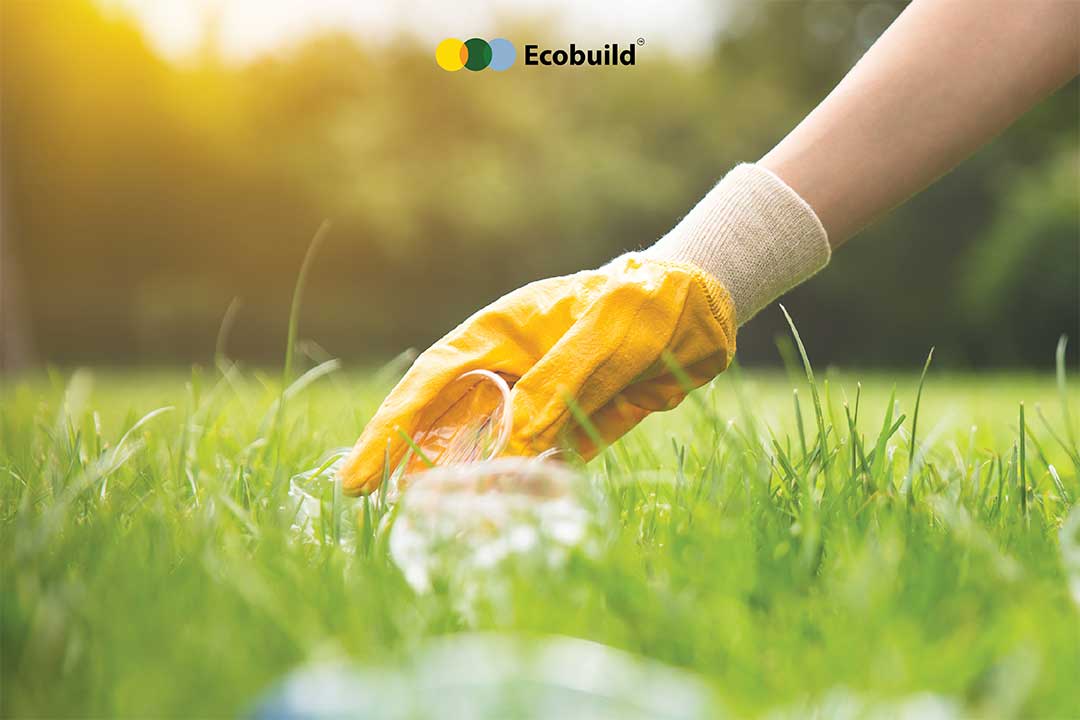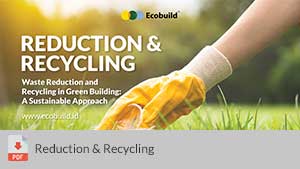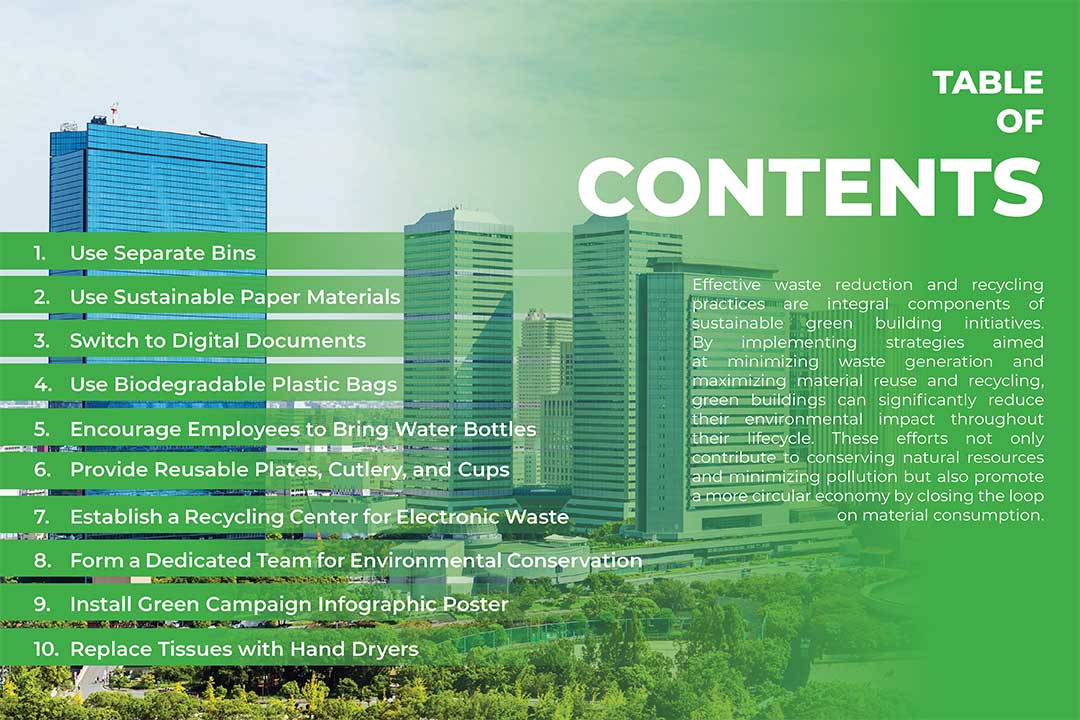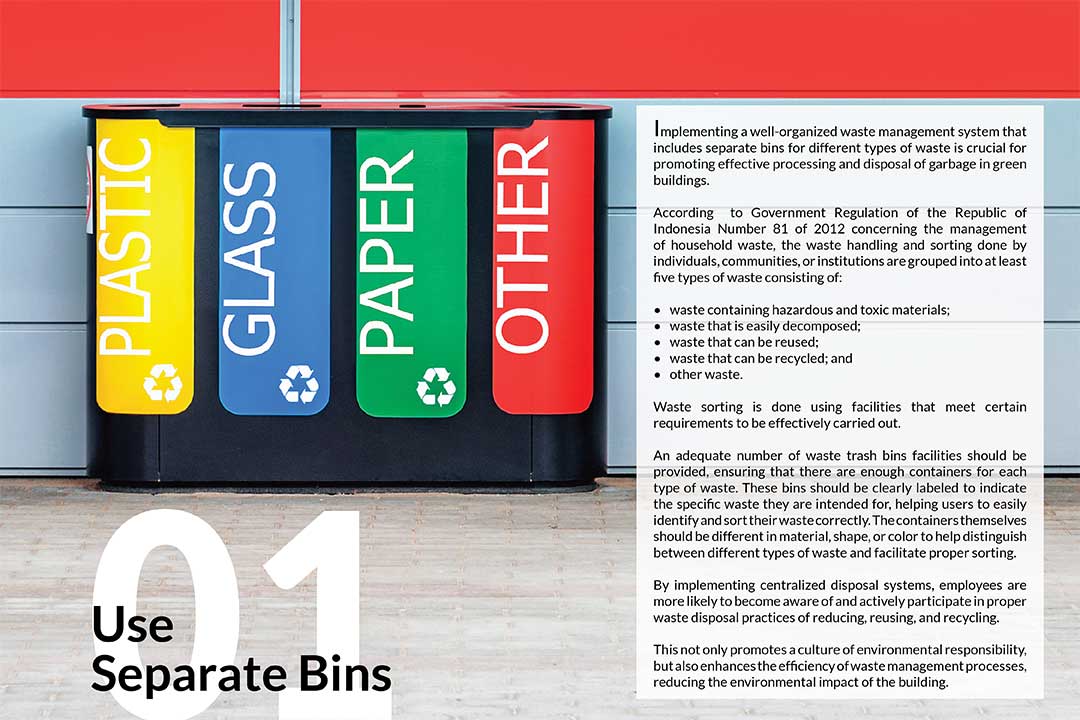Former Vice Governor of Jakarta, Ahmad Riza Patria, has highlighted a staggering issue regarding waste management in Jakarta. He revealed that the amount of waste generated in just three months surpasses the height of Monumen Nasional (Monas), an iconic landmark in Jakarta.
This alarming statement emphasizes the gravity of the waste problem faced by the city and underscores the urgent need for effective waste management strategies.
The main constituent of the wastes generated in Jakarta is organic wastes with 49,7% (SIPSN, 2020). With a total population of 10.56 million (BPS, 2020), Jakarta generates 8,369 tonnes/day of municipal solid waste (SIPSN, 2020) within a total area of 664,01 km².
With a waste generation rate of 0.7 kg/capita/day (Baqiroh, 2019), it is predicted that by 2035, the volume of waste in Jakarta will reach more than 9,000 tonnes/day (BPS, 2021).
Therefore, efficient waste management in office buildings, particularly in the context of green buildings, is essential for environmental protection.
Daily office activities generate a significant amount of waste, making it crucial to implement a well-designed waste management system. Such a system offers several benefits, including a cleaner work environment and increased cost efficiency.
Here are 10 scientifically supported strategies for optimizing waste management in green buildings:
1. Use Separate Bins
Implementing a well-organized waste management system that includes separate bins for different types of waste is crucial for promoting effective processing and disposal of garbage in green buildings.
According to Government Regulation of the Republic of Indonesia Number 81 of 2012 concerning the management of household waste, the waste handling and sorting done by individuals, communities, or institutions are grouped into at least five types of waste consisting of:
- waste containing hazardous and toxic materials;
- waste that is easily decomposed;
- waste that can be reused;
- waste that can be recycled; and
- other waste.
Waste sorting is done using the facilities that meet certain requirements to be effectively carried out.
An adequate number of waste trash bins facilities should be provided, ensuring that there are enough containers for each type of waste. These bins should be clearly labeled to indicate the specific waste they are intended for, helping users to easily identify and sort their waste correctly. The containers themselves should be different in material, shape, or color to help distinguish between different types of waste and facilitate proper sorting.
By implementing centralized disposal systems, employees are more likely to become aware of and actively participate in proper waste disposal practices of reducing, reusing, and recycling.
This not only promotes a culture of environmental responsibility but also enhances the efficiency of waste management processes, reducing the environmental impact of the building.
2. Use Sustainable Paper Materials
Scientists confirm that using building materials derived from non-renewable resources has caused substantial environmental harm due to our increased understanding of how humans and nature interact, as investigated in a 2019 paper recycling study published by the Journal of Environmental Science and Technology.
In recent years, recycling has emerged as a significant and contentious topic as a means of promoting sustainable development and safeguarding the planet’s natural heritage.
Paper waste reduction, reuse, and recycling are the best solutions for sustainable waste management due to their favorable effects on the environment.
The Green Building Council Indonesia (GBCI) suggested the use of paper from sustainable sources that are either recycled or made from renewable resources, obtained Legal Entity Identifier (LEI) or Forest Stewardship Council (FSC) certification, and have an environmental management system in their production process.
3. Switch to Digital Documents
The paper waste treatment efforts in Indonesia have primarily relied on recycling methods, with trash bins divided into categories of wet and dry waste to facilitate sorting.
However, this approach has not been successful in effectively reducing the amount of paper waste, mainly due to a lack of public awareness and compliance with waste sorting practices, despite counseling efforts and awareness of the negative impacts of waste accumulation (Sanchez et al., 2016).
Currently, paper waste serves as a primary raw material for the recycling industry; however, its management is not yet fully optimized, resulting in only 70% of paper waste being reused or recycled (Wahyono, 2001).
To address this issue, digitalization emerges as a potential solution to reduce excessive paper waste. Digitalization involves the conversion of various media, such as print, audio, and video, into digital formats.
By embracing digitalization, organizations and individuals can significantly reduce their reliance on paper-based documents and adopt more sustainable digital alternatives, thereby mitigating the environmental impact associated with paper waste.
4. Use Biodegradable Plastic Bags
The Green Building Council Indonesia suggests the use of sustainable plastic products that are recycled or from renewable sources, have an environmental management system in their production process, and are easily degradable unlike their traditional plastic counterparts, which take 20 to 1000 years to fully decompose.
Bioplastics are a promising alternative to traditional plastics as they are derived from renewable biomass sources such as sugarcane, corn, and even microorganisms like yeast.
Bioplastics made from renewable resources can be naturally recycled through biological processes, reducing reliance on fossil fuels and protecting the environment.
Another example of eco-friendly plastic material is oxium, which holds the Indonesian National Standard (SNI) of Ecolabel. This biodegradable material speeds up the molecular and chemical degradation of plastic to help address the accumulation of plastic waste in our environment.
5. Encourage Employees to Bring Water Bottles
Mitigating the increasing plastic waste generated by food delivery services can be achieved by promoting the use of personal water bottles and food containers among employees.
Encouraging individuals to bring their own reusable containers and cutlery significantly reduces the reliance on disposable items, thereby reducing the overall plastic waste produced.
6. Provide Reusable Plates, Cutlery, and Cups
Office kitchens and dining areas play a crucial role in waste reduction efforts by promoting the use of reusable tableware. Encouraging employees to bring their own meals or to utilize reusable cutlery, plates, and cups can effectively minimize the generation of paper and plastic waste.
By adopting this practice, offices can contribute to a more sustainable and eco-friendly work environment.
7. Establish a Recycling Center for Electronic Waste
Setting up a recycling center for electronic waste promotes proper disposal and recycling.
Office supplies and technological devices that are no longer needed can be collected and made available for recycling.
8. Form a Dedicated Team for Environmental Conservation
Establishing a team focused on environmental conservation can help to drive waste management initiatives. This team should set realistic and measurable targets and involve employees from various divisions to ensure comprehensive implementation of waste reduction strategies.
9. Install Green Campaign Infographic Poster
Visual aids, such as infographic posters, can be placed at strategic points in the building, such as in pantries where people tend to dispose of their food waste, to inform dwellers about recycling practices and other actions that support waste management.
10. Replace Tissues with Hand Dryers
Whenever possible, replacing tissues with hand dryers helps reduce paper waste.
If hand dryers are not feasible, choose toilet paper made from sustainable materials like bamboo, which is considered more eco-friendly.
Closing statement:
Implementing an effective waste management system is crucial for green buildings. Waste management such as emphasizing sustainable recycling initiatives, discouraging the use of single-use plastics or paper, and opting for equipment made from environmentally friendly materials further support efforts to mitigate climate change and protect the environment.
You can read the full article about Waste Reduction and Recycling in Green Building: A Sustainable Approach below.





